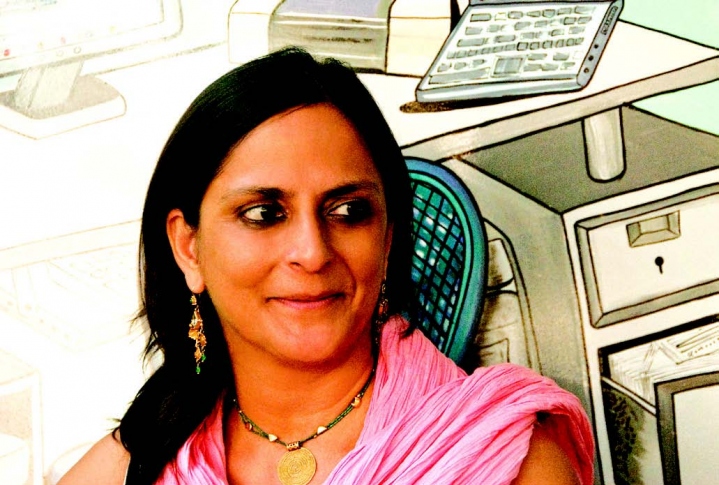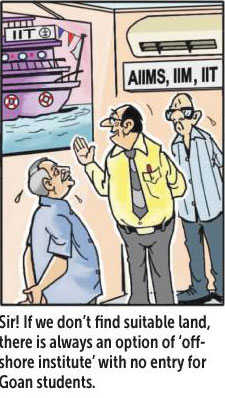
Arti Das
When it comes to communicating, there’s no doubt in the fact that the visual form of communication is more appealing. The image based social media apps are best examples of it—they easily grab our attention and convey the message directly and in a short span of time.
But, long before social media and internet, this form of communication was always present around us and street art is the most prominent one. But, now with digital art, this hand painted art form is slowly diminishing and disappearing from our public spaces.
But, there are some who are documenting this art form for posterity. The book titled, ‘SADAK: Hand painted Street Signs in India’ by photographer, filmmaker, production designer and artist, Aradhana Seth, is one such attempt. The book which is published by Humboldt Books will be released on April 5 at Literati book shop, Calangute.
For Aradhana, who has worked in productions like ‘The Darjeeling Limited’ (2007), ‘The Bourne Supremacy’ (2004), to name a few, this documentation was part of her work and also something that she was drawn to as a designer. She started photographing this street art around 30 years ago.
“I have been photographing the art on the street for more than 30 years. It’s because I have always been very interested in font, typography and the ways in which people communicated through the visual language. Caves, rock paintings, warli, phad paintings, silent films, advertisement, etc. While doing my masters in film, I was out and about on the streets for hours. I began photographing many signs especially the ones in the ‘last mile’. It’s the short geographical segment of delivery of products to customers located in dense areas. Tools of their trade or their trade itself. Nuts, bolts, spanners, cables, chicken and goat. This doesn’t require the written word and can be told through this visual language,” explains Aradhana.
She adds that when she started this process of photographing them she never realised that it is a dying art.
It was omnipresent in every nook and corner of the country. With this book, ‘Sadak’, she is trying to showcase this hand painted rich art which might be or is slowly disappearing.
Aradhana in this book has covered street art from various part of the country from Kolkata to Kashmir to Delhi, to Madhya Pradesh, to Tamil Nadu. Interestingly, she never went to a place to document this, specially. It was something she got drawn to it when she was travelling, or working on a film direction and sets. “When I travel with my crew or friends, I may tell them to stop a car and run to photograph a wall. People who know me well, know that it is part of the deal,” quips Aradhana. She further adds that images in the book are a small sample of what she has photographed.
The images in the book are divided into three main categories—Nature and Landscape, Culture, Commerce and Service. These are the images of designs on shop shutters, doors, signs and the walls of various places of interest and businesses.
The book also contains biographies of some of the artists who created these paintings and a critical text by visual culture lecturer Kajri Jain, and also by artist Francesco Clemente.
When asked about the street art in Goa by artist Solomon Souza, St+art India Foundation, and many unknown artists who have expressed many issues through street art, she states that she admires and appreciates this art. She further mentions, “I am constantly following the work of artists like Tona and a bunch of others known and unknown whose style I have begun to recognise. I have images from the colourful walls of Goa from 2003 and 2004 that have been painted over. Painted signs always stay with me. I remember when I visited Literati 17 years ago, their bookstore sign was hand painted.”
She also confirms that this street art found in Goa is quite different from her book ‘Sadak’ as dealt with visual information between the buyer and seller and also direct messaging like in case of wildlife signs.
Aradhana who is an advocate for hand painted street art laments that now digital art has replaced it. “I wish it was a parallel form of art and not one replacing the other.” She informs that hand painted art is lot of hard work as it involves painting on busy streets in the hot sun. The brush stoked on the street feels so human personal as they involve the touch and feel of the hand. She also suggests that this form of street art spokes about the place in terms of its goods and services. The colour palette, motifs vary from region to region. The digital art form often feels more homogenised or copied from the internet.
When asked how she looks at awareness about street art among people at large as there are various incidents where walls are re-painted by authorities. “It would be great if that art didn’t get thoughtlessly painted over as it makes the streets more interesting but also understand that the beauty of what’s in ‘Sadak’ is it’s impermanent nature as it’s so much about the times we live in.”
‘Sadak’ will be launched on April 5 at 6 pm at Literati, Calangute. The author of the book, Aradhana Seth will be in conversation with photographer and bookmaker, Dayanita Singh.
